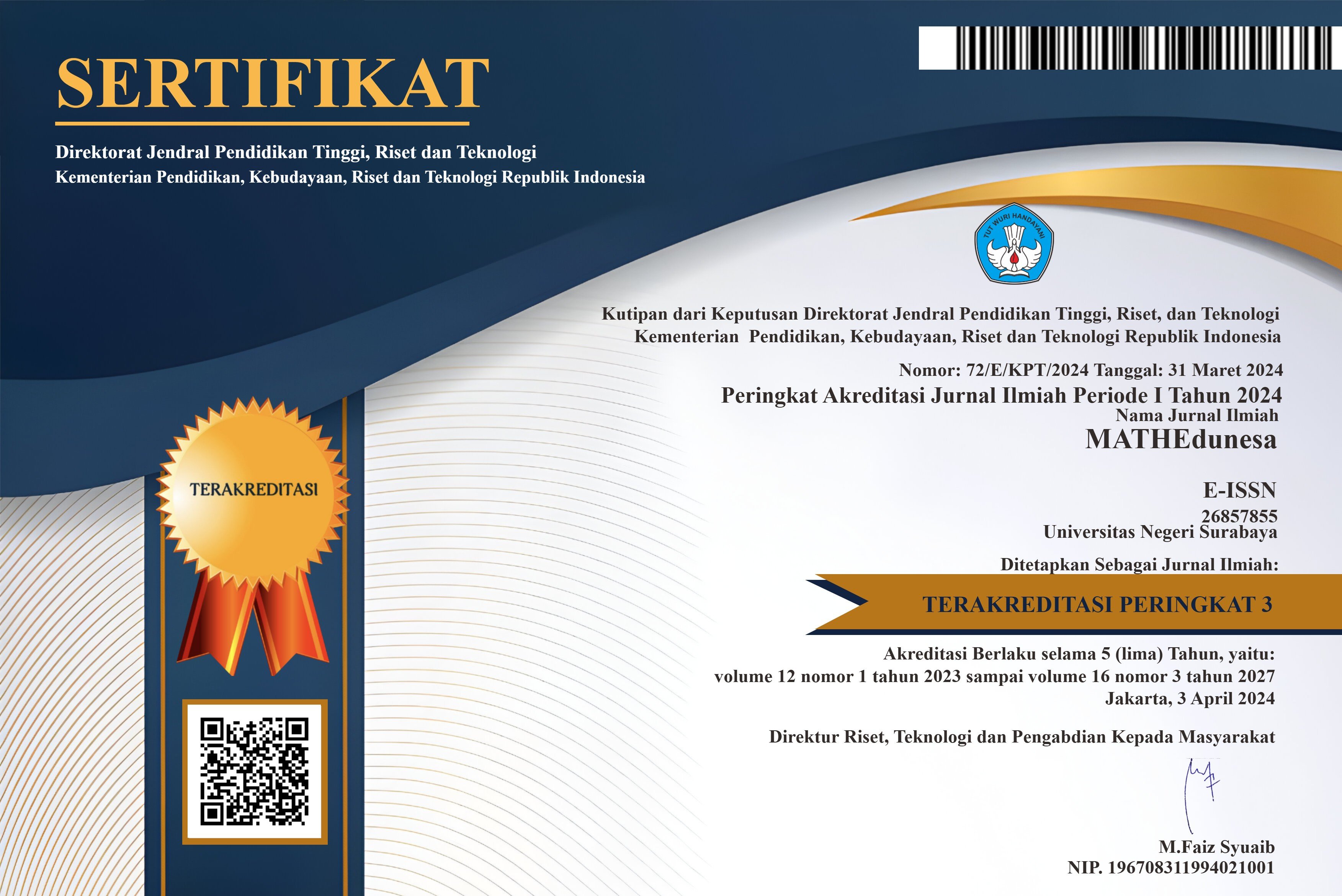KEMAMPUAN BERPIKIR KREATIF SISWA ASIMILASI (ASSIMILATING) DAN KONVERGEN (CONVERGING) DALAM MEMECAHKAN MASALAH NUMERASI
DOI:
https://doi.org/10.26740/mathedunesa.v11n2.p548-561Downloads
Download data is not yet available.
Downloads
Published
2022-06-03
Issue
Section
Articles
 Abstract views: 634
,
Abstract views: 634
, PDF Downloads: 850
PDF Downloads: 850




